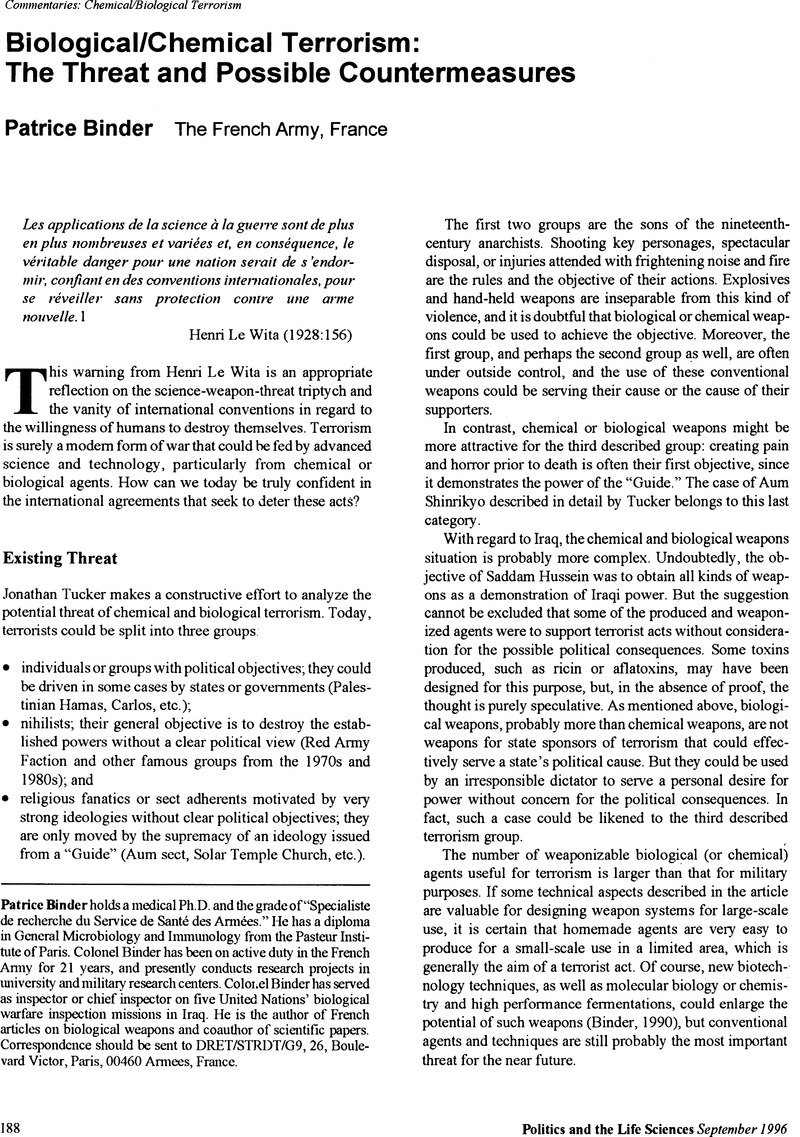No CrossRef data available.
Article contents
Biological/Chemical Terrorism: the Threat and Possible Countermeasures
Published online by Cambridge University Press: 17 May 2016
Abstract
An abstract is not available for this content so a preview has been provided. Please use the Get access link above for information on how to access this content.

- Type
- Roundtable Commentaries
- Information
- Copyright
- Copyright © Association for Politics and the Life Sciences
References
Binder, P. (1990). “Biotechnologies et génétique dans le concept de nouvelles formes d'armes biologiques.” Med et Arm 18:463–66.Google Scholar
Binder, P. (1994). “Could Inspection Verification Measures Be Accepted by Biotechnology Industry?” In Altmann, J., Stock, T., and Stroot, J.P. (eds.), Verification after the Cold War. Amsterdam: Vu University Press.Google Scholar
Bovallius, A. and Roffey, R. (1994). “Evaluation of Efficiency of Verification Methods for the BWC.” In Altmann, J., Stock, T., and Stroot, J.P. (eds.), Verification after the Cold War. Amsterdam: Vu University Press.Google Scholar
Geissler, E. (1994). “Confidence-Building Information from the Parties to the Biological Weapons Convention.” In Altmann, J., Stock, T., and Stroot, J.P. (eds.), Verification after the Cold War. Amsterdam: Vu University Press.Google Scholar
Zilinkas, R.A. (1986). “Recombinant DNA Research and Biological Warfare.” In Zilinskas, R.A. and Zimmerman, B.A. (eds.), The Gene Splicing War. New York: Macmillan.Google Scholar




